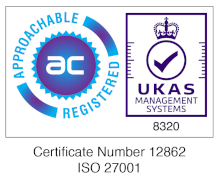12 Lead ECG Best Practices

The 12 lead ECG machine is used for one of the most common diagnostic tests in primary care and is a valuable tool in diagnosing cardiovascular performance. It is carried out on thousands of patients every day within the NHS with over 75% of GP practices now performing them internally.
We've collected a list of recommended best practices for you to follow when you're next taking a 12 lead ECG:
1) Ensure the patient is reclined in a comfortable resting position
Ensure the patient is reclined in a comfortable resting position. Ask them to lie still, remain quiet and breath normally whilst taking the ECG as any skeletal muscle activity will be picked up as interference.
2) Use A High Quality ECG Electrode
Make sure you are using a high quality ECG electrodes, such as the AMBU SUPAtab, which can help to reduce the common problems associated with poor electrode adhesion.
3) Ensure The Correct Electrode Placement
Ensure correct electrode placement by downloading and printing our free 12 Lead ECG placement guide as an easy reminder of where the electrodes should be positioned on the patient’s chest and limbs.
4) Record In A 4 x 3 Format
It is usually recommended to record the ECG in a 4 x 3 format with a rhythm strip along the bottom of the ECG trace. This is usually lead II.
5) Record Any Clinical Signs During The Procedure
If the patient has any clinical signs during the procedure, such as chest pain, then this should be recorded in the notes or on the ECG tracing itself.
6) Remove The Electrodes After Use
Ensure that the electrodes are removed from the patient’s skin once the ECG has been completed and dispose of them in the clinical waste. If you are not using an integrated device, such as our range of i3 integrated solutions, then make sure that the ECG is correctly labelled with the patient's details.
For more advice when taking a resting ECG visit our 12 Lead ECG Tips page and keep an eye on our News section for the latest hints and tips. Remember, if you experience any problems with any of your Numed diagnostic or waiting room equipment then we have a dedicated support section which can provide help and advice about a range of our equipment.
Sources:
https://www.heart.org/idc/groups/heart-public/@wcm/@mwa/documents/downloadable/ucm_467758.pdf
https://www.thh.nhs.uk/documents/_departments/undergraduates/year3/ecg.pdf [has since been removed]



